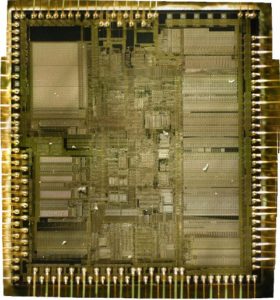STMicroelectronics ST62T28 Memory Program Unlocking
An excellent hardware hacker knows very well about how to manipulate the clock system of it to carry out the STMicroelectronics ST62T28 Memory Program Unlocking:
The main oscillator of the MCU can be driven by any of these clock sources:
– external clock signal
– external AT-cut parallel-resonant crystal
– external ceramic resonator
– external RC network (RNET).
In addition, an on-chip Low Frequency Auxiliary Oscillator (LFAO) is available as a back-up clock system or to reduce power consumption.
An optional Oscillator Safeguard (OSG) filters spikes from the oscillator lines, and switches to the LFAO backup oscillator in the event of main oscil- lator failure. It also automatically limits the internal clock frequency (fINT) as a function of VDD, in order to guarantee correct operation. These functions are illustrated in below Figure.
Below Table illustrates various possible oscillator configurations using an external crystal or ceramic resonator, an external clock input, an external resistor (RNET), or the lowest cost solution using only the LFAO.
For more details on configuring the clock options, refer to the Option Bytes section of this document.
The internal MCU clock frequency (fINT) is divided by 12 to drive the Timer, the Watchdog timer and the A/D converter, by 13 to drive the CPU core and the SPI and by 1 or 3 to drive the ARTIMER, as shown in below Figure.
With an 8 MHz oscillator, the fastest CPU cycle is therefore 1.625µs.
A CPU cycle is the smallest unit of time needed to execute any operation (for instance, to increment the Program Counter). An instruction may require two, four, or five CPU cycles for execution.




